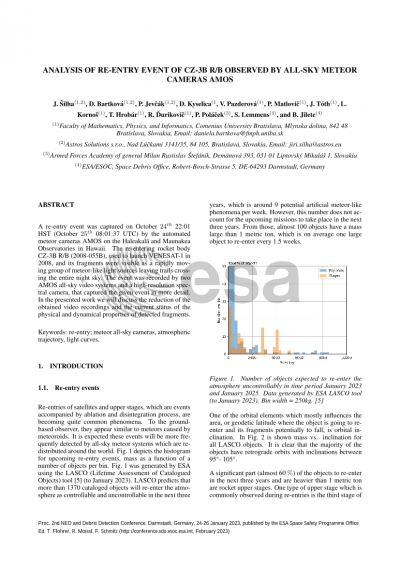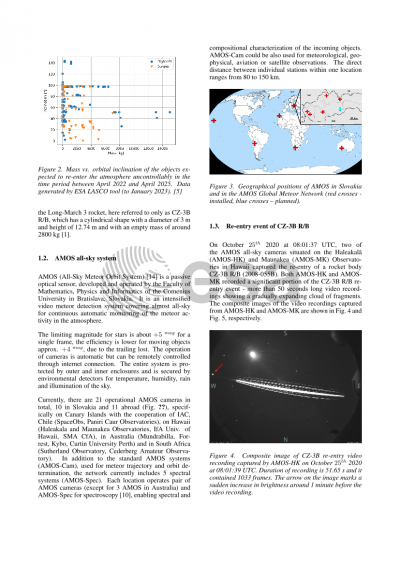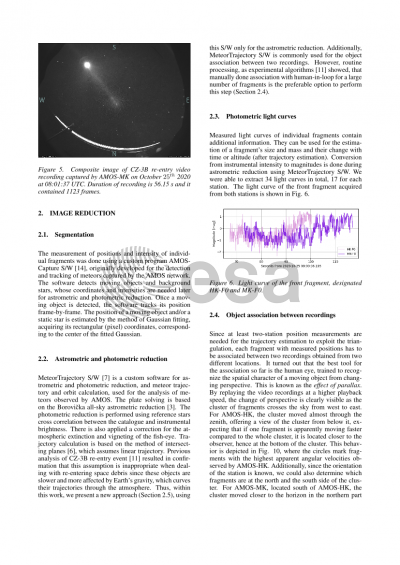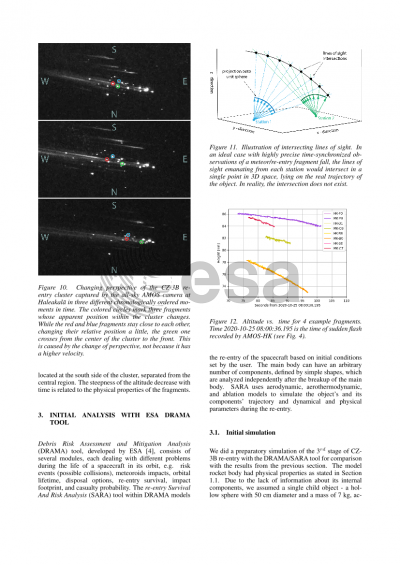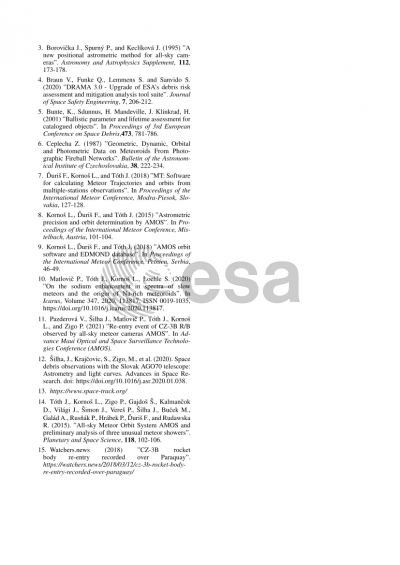Document details

Abstract
AMOS, the All-sky Meteor Orbit System, is a system dedicated to automatic detection and orbit determination of meteors. The system has been developed and is operated by the Faculty of Mathematics, Physics and Informatics, Comenius University in Bratislava, Slovakia (FMPI CU). At current stage, the AMOS system consists of two different parts, the AMOS-Cam and AMOS-Spec. AMOS-Cam is designed for meteor detection and observation, but could be used for meteorological, geophysical, aviation or satellite observations. There are five AMOS systems in Slovakia and eleven AMOS systems abroad installed at two locations in Canary Islands, two locations in Chile, two locations in Hawaii, three locations in Australia and two locations in South Africa. The network is global covering north and south hemispheres detecting meteor activity 24/7. Each of the AMOS locations includes a spectrograph enabling spectral and compositional characterization of the incoming objects.
A re-entry event was captured on October 24th 22:01 HST (25th 08:01:37 UTC) by the automated all-sky meteor cameras AMOS on the Haleakalā and Maunakea Observatories in Hawaii. The re-entering rocked body CZ-3B R/B (2008-055B), used to launch VENESAT-1 in 2008, was visible as rapidly moving group of meteor-like light sources leaving trails crossing the entire night sky. The event was recorded by two AMOS all-sky video systems and a high-resolution spectral camera, that captured given event in more detail.
The disintegrated CZ-3B object was the third stage of a Long March 3B rocket. It had a cylindrical shape with base of 3 m in diameter, height of 12.4 m and dry mass of 2.8 metric tons. Re-entries of such massive objects are quite common, with roughly 2-3 objects in average entering atmosphere each month. These events are usually accompanied with the break-up of the parent body which leads to fragments traveling similar trajectories on the sky. Observations from cameras from two different locations allow to estimate the atmospheric trajectories of selected fragments with accuracy of few dozen of meters. Additionaly, observations also provide information about the photometric behavior of the fragments, which can be used to estimate the illuminous mass of the fragments.
We are going to present the details of the re-entry event captured by all three AMOS cameras installed on Hawaii Islands which lasted over 50 seconds and the exact time of possible disintegration of the parent body. Presented will be experimental algorithms used to process such data set which is unique compared to typical meteors and bolides usually captured by AMOS system. Presented will be dynamical (trajectory) and physical (brightness) characteristics of all the identified and between recordings associated fragments. Eventually, presented will be results of preliminary comparison between observed and modelled data obtained from ESA re-entry event modelling tool DRAMA.
Preview
